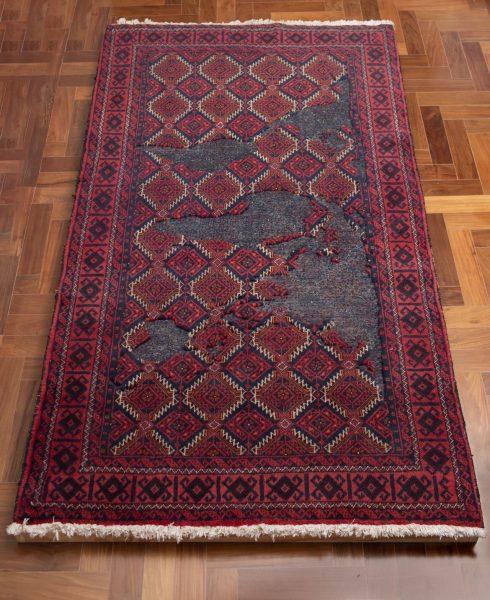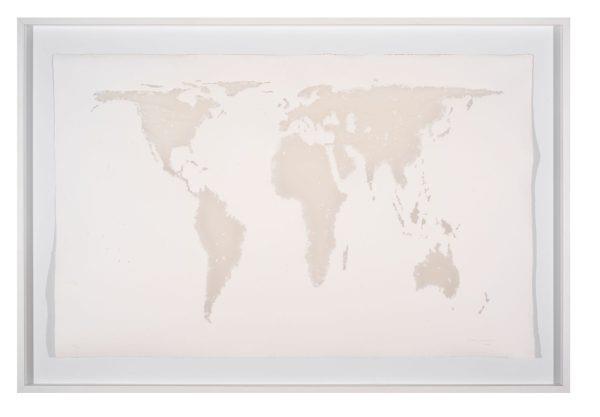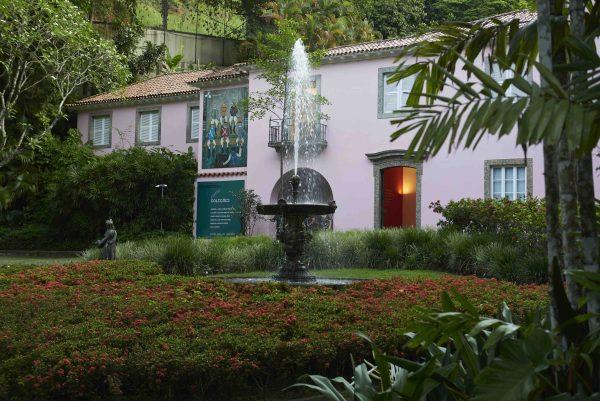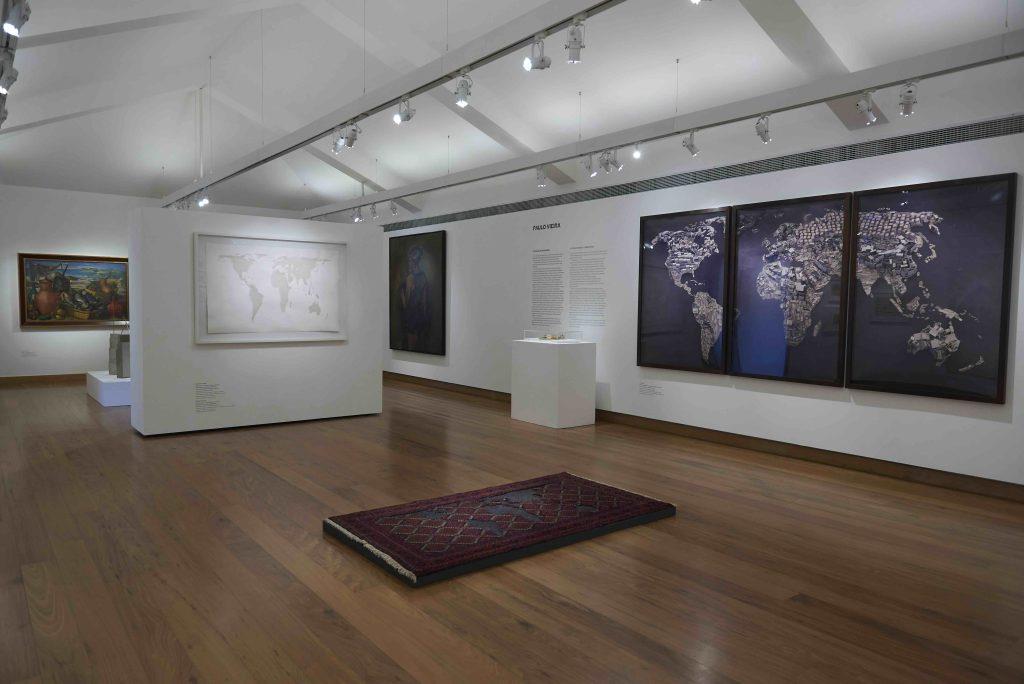
In ‘Dialogue’ Between Art Collections, Works By Mona Hatoum

Tapestry: One of Hatoum's works
The 2008 Baluchi (multicolored) tapestry represents a world map in bas-relief. Another creation, Projection (2006), represents another map made of cotton and dried leaves of the bacá tree. The two are part of the collection of Paulo Vieira, executive director of Rio de Janeiro's Museum of Modern Art (MAM-RJ) and chair of the Tate International Council, an institution that manages three British museums, including Tate Modern, in London.
The director of Casa Roberto Marinho and general coordinator of the exhibition, Lauro Cavalcanti, explained to ANBA that Vieira's collection stands out for its cutout of maps, cities, and urban landscapes.“Among the pieces [from Vieira's collection], there are two beautiful works by Hatoum. One is the rugs she used to make the world map. And the other one, on the wall, which she wore out with cardboard to make a different map. These two works are highlights of the exhibition,” he said.
Born in Beirut, Lebanon, in 1952, Hatoum is the daughter of Palestinians who sought refuge in the neighboring country. She moved to London in 1975, when what was supposed to be a brief visit turned into living in a new country due to the Lebanese Civil War (1975-1990). Hatoum said that her life story ends up causing a sense of displacement in her creation.
Different collections, different looks
The exhibition unfolds in many ways from the perspective of the guest collections. It has different rooms for the collections of Andrea and José Olympio Pereira, Monica and George Kornis, Luciana and Luis Antonio de Almeida Braga, Marcia and Luiz Chrysostomo, Mara and Marcio Fainziliber and Paulo Vieira. The displayed works were selected by the guests and reflect their perspective and relationship with the Casa Roberto Marinho collection. The Marinho family and Cavalcanti made the invitation to them.

Another piece by the Palestinian artist: A sense of displacement expressed in the creative process
Andrea and José Olympio Pereira selected from their collection works by living contemporary artists whose creations few people could access. Mônica and George Kornis chose to exhibit new pieces there. Luciana and Luis Antonio de Almeida Braga concentrated their exhibition on works by Lasar Segall and Rubens Gerchmann, while Marcia and Luiz Chrysostomo divided the collection into three axes defined as“Themes,”“Artists,” and“Narratives.” Mara and Marcio Fainziliber sought to promote dialogue between the different artists in their collection and pieces by Brazilians and foreigners. In addition to Hatoum, Vieira took works by the Brazilian Leonilson (1957-1993), the Englishman Jonathan Callan, and the Slovenian Marjetica Potrc, among others.
Cavalcanti said that the idea of the exhibition was precisely to show the general public works of art from private collections that are not easy to access. An essential part of this initiative, he said, was housing these pieces in an institution that also owns a private collection.
“Casa Roberto Marinho is an example of a collector's children creating a cultural space to make the work their father collected available to the public. Even before having the cultural space, they always held traveling exhibitions to show the works to the public. Five years ago, I was invited to design the cultural space, and we opened the house with great success among critics and the public. And then the idea came up – why not invite other collections so the public can see them?” said Cavalcanti.

The house keeps stories of Rio and now brings pieces from private collections
After extensive renovations to the mansion where the journalist, businessman, and founder of communications network Globo, among other companies, lived until he died in 2003, the children and partners of the Globo group housed the Casa Roberto Marinho Institute there in 2018. The house sits in the Cosme Velho neighborhood, in a historic region of Rio. It is located next to the newly restored Largo do Boticário. Both are under the arms of one of the country's main postcards – the statue of Christ the Redeemer.
There, Roberto Marinho received Brazilian and foreign artists, politicians, and businesspeople at events that moved the Rio scene. On the initiative of his sons Roberto Irineu Marinho, João Roberto Marinho, and José Roberto Marinho, in 2014, the house began to be restored and take the current shape it presents today, five years after its opening. Check out more information about the exhibition here .
Translated by Elúsio Brasileiro
Selmy Yassuda/Press release Press Release Press Release Selmy Yassuda/Press releaseThe post In 'dialogue' between art collections, works by Mona Hatoum appeared first on Agência de Notícias Brasil-Árabe .
.jpg)
Legal Disclaimer:
MENAFN provides the
information “as is” without warranty of any kind. We do not accept
any responsibility or liability for the accuracy, content, images,
videos, licenses, completeness, legality, or reliability of the information
contained in this article. If you have any complaints or copyright
issues related to this article, kindly contact the provider above.


















Comments
No comment